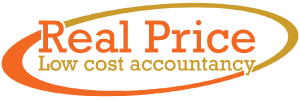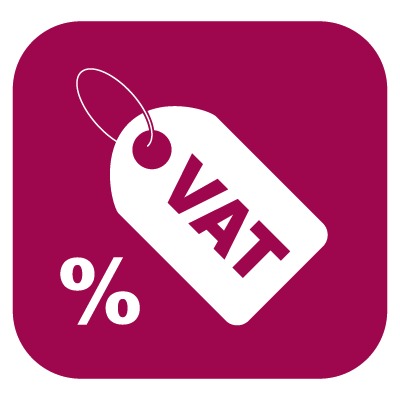A standard rate single VAT100 VAT Return prepared from your Clearbooks bookkeeping records by an ACCA qualified chartered accountant.
What do I get when I buy this product?
A standard rate VAT100 VAT Return prepared from your Clearbooks bookkeeping records. Prepared by an ACCA registered chartered accountant.
Who should buy this product?
If you are a Vat Registered business who keeps their bookkeeping data on Clearbooks accounting software you can easily purchase this product. Applies only to UK Vat registered businesses.
It’s easy: complete an online form and we will do the rest.
At your convenience
The most convenient way to prepare your Vat Returns.
After you have purchased this product simply provide us with your completed Clearbooks bookkeeping records or online log in details. We will also forward you a questionnaire to complete.
Based upon your Clearbooks bookkeeping records and those replies one of our ACCA registered chartered accountants will produce your Vat return and report ready for filing.
Time period – It takes five working days to deliver this product;
No need to attend offices, this purchase is completed online from the convenience of your office or the comfort of your home. You will be able to ask your Helpbox chartered accountant questions and you will receive a full presentation explanation of the VAT100 return.
Price promise
Fixed (fee) price. No more unexpected, unexplained accountant’s bills.
We will prepare your Vat Return ready for you to file yourself or we will file it for you. If you want us to file your vat returns simply add VAT100 vat return single to your shopping trolley when requested.
Guaranteed - NO MORE MISSED DEADLINES
If you provide us with the information in the exact format which we request it and within our specifically stated timeframes we guarantee that we will prepare your return within HMRC’s filing deadlines.
Why would I need a VAT return?
When the total value of your sales reaches the registration threshold, you have to register and account for VAT if you;
? are based in the UK and make business supplies of goods or services here
? make sales from the EU into the UK
? acquire goods into the UK from the EU
? sell certain assets
? make business supplies of goods or services in the UK, but are not resident here
You need to notify and apply for registration by the end of the month following the one in which you reached the threshold. You will then be vat registered from the 1st of the month after that. E.g. breached threshold on 13th May, apply for registration by 30th June registered from 1st July.
Value Added Tax (VAT) is a tax businesses have to charge when they make business supplies (that is, they sell goods or services) in the United Kingdom (UK) or Isle of Man.
HMRC will then send you a registration number and the dates for your vat including your first return period and when to file by.
You will normally have to submit a VAT return every three months. We call the period covered by this return your tax period.
If you do not file your Vat return by the due date, penalties and possibly surcharges may apply
1. A report which identifies any issues in your records which may affect your vat return
2. Draft VAT100 Return.
a) Box 1,
b) Boxes 3-7(inc.).
3. Your questions answered.
4. Amendments to your VAT100 return
5. A Final VAT100 return. A detailed report of the return and figures entered. The totals for the above boxes presented to you for your own submission of the online VAT return to HMRC.
Simply provide us with your completed Clearbooks bookkeeping records and we will produce your Vat return. You will be able to ask your Helpbox chartered accountant questions and you will receive a full presentation explanation of the return.
What is VAT?
VAT is short for Value Added Tax. VAT is applied to all
goods and services in the UK and is administered by Her Majesties Revenue and
Customs HMRC. Different rates of VAT apply to different goods and services.
Different types of
VAT rate
The amount of VAT applied to most goods is called standard
rate currently in 2014 is taxed at 20% of the net purchase price. Thevarious rates of VAT are (in 2014):
Standard rate
of VAT – currently 20%
Reduced rate
of VAT – currently 5%
NilRate VAT
Flat rate
There are also special VAT schemes such as:
Margin schemes for second hand goods.
For example a second car dealer will use a VAT margin
scheme. This allows the business to charge output VAT only on the difference
between the selling price of the car less what he paid for it.
Calculating VAT
When calculating input VAT the supplier has the
responsibility to apply the correct rate of VAT. However, it is important for
you to understand the rate of VAT which has been applied to your receipt is
correct and accurate and that they are actually VAT registered. Otherwise you
will be unable to reclaim the VAT on your receipts. Even if you have claimed
VAT from a receipts which was incorrect. If at a later date HMRC discover the
error they can ask you to repay the VAT with and apply interest charges.
Many small businesses rely on a tax calculator performed by
a VAT specialist.
Calculating and applying the correct rate of VAT to your
invoices is very important. That is why many businesses employ a specialist tax
accountant to advise them on the correct rates of output VAT to apply to their
invoices.
How to reclaim VAT
In order to reclaim VAT, it’s important to know what goods
and services the particular VAT rates apply to so that you charge to correct
rate of VAT and reclaim the correct amount of VAT as a reclaim or rebate from
HMRC.
Input VAT
Any receipt from a VAT registered business must apply the
correct rate of VAT for the goods and or services which they delivered. The VAT
on those supplier receipts is called input VAT. This is the VAT which you are entitled
to reclaim from HMRC.
Output VAT
Any invoices a VAT registered business issues to customers
must apply the correct rate of VAT for the goods and or services which they
delivered. This is added to the net
selling price. This is the VAT outputs which the business generates and is the
amount of VAT which is due to HMRC less and input VAT which can be offset
against it.
VAT Rebate
than the output VAT. In which case the VAT registered business is entitled to a
VAT rebate. In this case at the end of the VAT period HMRC will make a
repayment or rebate of the VAT to the VAT registered business.
Registering for VAT
Registering for VAT is very important. All commercial
business entities including sole traders, partnerships, and limited liability
companies have to register for VAT if their turnover (that is the amount of
their sales) breaches the VAT registration threshold. It is very important that
all business owners know what the current VAT registration threshold is. If
your turnover breaches the VAT registration threshold then you are liable to
charge VAT on all goods and services thereafter.
Dealing with HMRC
Also if you do breach the VAT registration threshold (even
accidentally) and do not tell HMRC then you will be liable to sever penalties and fines.
Filing a VAT return
Most VAT registered businesses file their VAT returns every
3 months. These are called quarterly VAT returns. However, not everyone files
VAT returns every 3 months. Provided the conditions are met businesses can file
VAT returns every month, monthly VAT returns. Annual VAT return, where only one
VAT return is filed each year at the accounting year-end.
Registering for VAT
It is very important that all business whose turnover in any
12 month period. Not just in the businesses financial period, in any 12 month
rolling period, exceeds the turnover limit for compulsory registration for VAT,
they must register for VAT. If you do not you face having to pay HMRC the
amount of VAT you should have charged on your invoices, even if you did not
apply VAT to your invoices. Plus you might face an additional fine, and in most
severe cases could face a criminal prosecution.
The turnover limit for compulsory registration for VAT is
£79,000 in any 12 month period.
Trading with the EU
There are special rules applying to VAT when trading with
the European Union. Therefore anyone who plans to sell or buy goods from the EU
must understand those special rules.
What is VAT?
VAT is short for Value Added Tax. VAT is applied to all
goods and services in the UK and is administered by Her Majesties Revenue and
Customs HMRC. Different rates of VAT apply to different goods and services.
Different types of
VAT rate
The amount of VAT applied to most goods is called standard
rate currently in 2014 is taxed at 20% of the net purchase price. Thevarious rates of VAT are (in 2014):
NilRate VAT
How to reclaim VAT
It’s important to know what goods and services the
particular VAT rates apply to so that you charge to correct rate of VAT and
reclaim the correct amount of VAT as a reclaim or rebate from HMRC.
Registering for VAT
Registering for VAT is very important. All commercial
business entities including sole traders, partnerships, and limited liability
companies have to register for VAT if their turnover (that is the amount of
their sales) breaches the VAT registration threshold. It is very important that
all business owners know what the current VAT registration threshold is. If
your turnover breaches the VAT registration threshold then you are liable to
charge VAT on all goods and services thereafter.
Dealing with HMRC
Also if you do breach the VAT registration threshold (even
accidentally) and do not tell HMRC then you will be liable to sever penalties and fines.
Clearbooks
accountancy software
Provide us a back up of your Clearbooks software using the
Helpbox upload bay. We will then prepare your annual accounts from your
Clearbooks. Preparing annual accounts from Clearbooks via Helpbox is probably
the most affordable way to prepare your annual accounts.


